Name S. Gill | ||
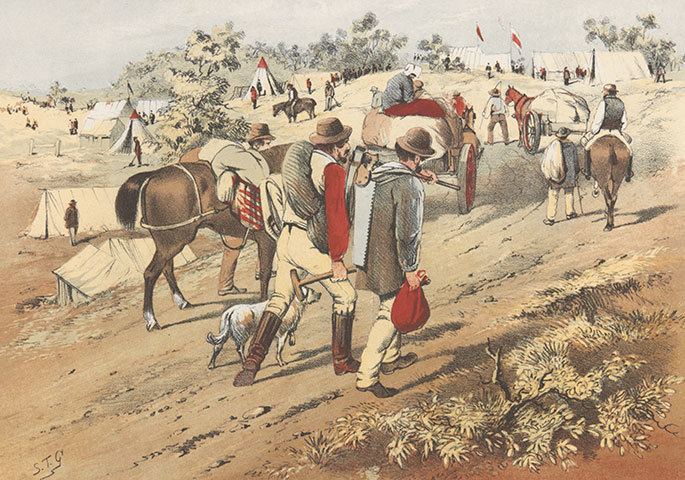 | ||
Died October 27, 1880, Melbourne, Australia | ||
S. T. (Samuel Thomas) Gill (18 May 1818 – 27 October 1880), also known by his signature S.T.G., was an English-born Australian artist.
Contents
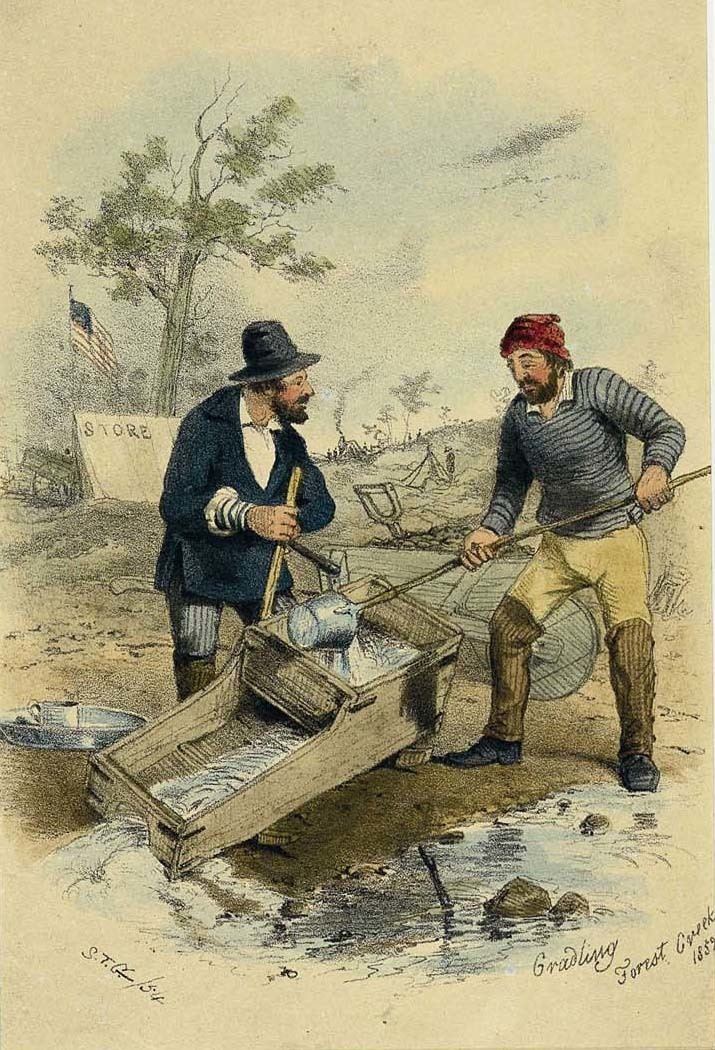
Gill was born in Periton, Minehead, Somerset, England, son of the Reverend Samuel Gill, a Baptist minister, and his first wife, Winifred Oke. Rev. Gill became the headmaster of a school at Plymouth, where the son was first educated, then he continued to Dr Seabrook's Academy, Plymouth. Having moved to London, Gill was employed as a draughtsman and watercolour painter by the Hubard Profile Gallery, before departing for the colony of South Australia in 1839 with his parents, arriving December 17.[1]

"For three quarters of a century, until Donald Friend, Sidney Nolan and Brett Whiteley, ST Gill had the sharpest in the South. He recorded with sprightly directness the social activities of the Colony"
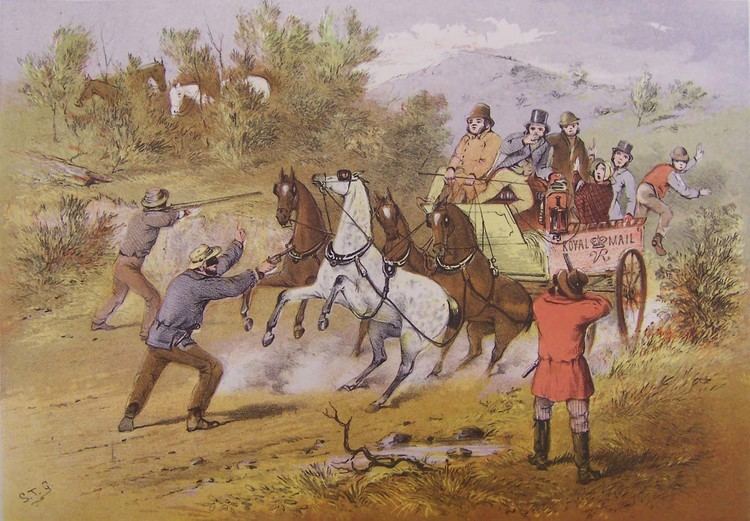
Life in Australia
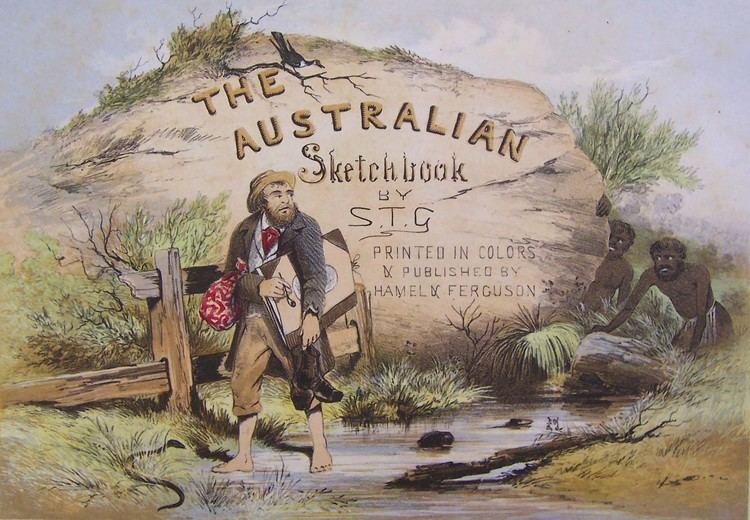
Samuel Thomas Gill (or S.T. Gill) arrived in Adelaide, aged 21 and established a studio in 1840, and called for those 'desirous of obtaining a correct likeness' of themselves and their families, friends, animals and residences to contact him. His activities soon expanded to include street scenes and public events, including the newly discovered copper mines at Burra Burra as well as the departure of Charles Sturt's expedition for the interior on 8 October 1844. His sketching tours of the districts surrounding Adelaide, produced a number of watercolours.
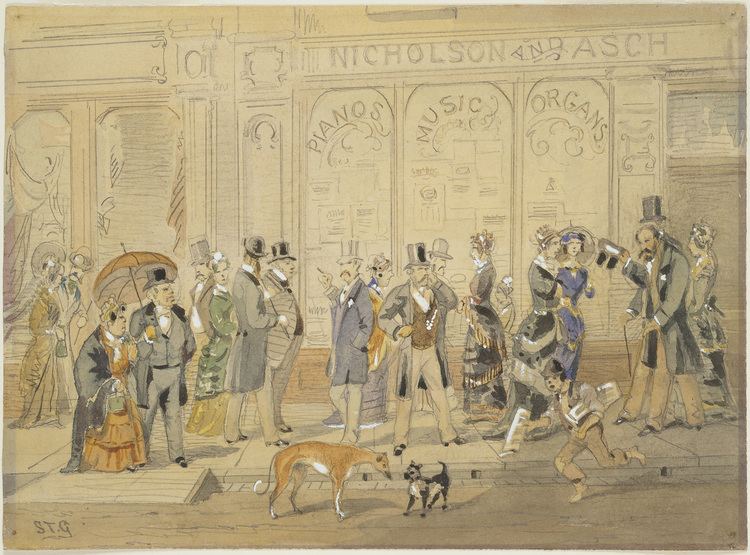
Gill was one of the inhabitants in Melbourne to take interest in photography - ordering a daguerreotype camera and the other necessary equipment in 1846, setting up as a professional photographer. With public interest in the new medium not forthcoming, Gill sold his camera to Robert Hall prior to his departure with John Horrocks' expedition northwards to the Flinders Ranges later in 1846. Horrocks, the first settler of South Australia's Clare Valley, mounted a small expedition to search for suitable farming land in the country northwest of Mount Arden in the southern Flinders Ranges. Gill's watercolours and pencil sketches provide a narrative of this fateful trip, which saw Horrocks die after being accidentally shot. In January 1847 Gill raffled some sketches made by him on the journey, and in February an exhibition of pictures was held in Adelaide of which he appears to have been the organizer. In 1849 he published Heads of the People, 12 lithographic sketches of South Australian colonists.
In 1852, following a series of personal tragedies including bankruptcy and ill health, Gill joined a large group of South Australians heading for the Mount Alexander gold fields, Victoria. Originally intending to turn his hand to digging for gold, he soon returned to portraying images of everyday life, depicting life on the gold fields and the emergence of substantial towns like those of Ballarat and Bendigo.
Late in 1852 Gill moved to Melbourne where he began recording the impressive growth of that city, although he continued to take periodic sketching trips to the gold fields and other parts of Victoria. Gill's skill as a lithographer resulted in the production of a number of lithographs during this period including Victorian Gold Diggers as They Are, The Diggers and Diggings of Victoria As They Are 1855, and Sketches of Victoria. It is largely from these works, a number of which were reproduced in England and Germany, that his reputation as "artist of the goldfields" was formed.
Gill moved to Sydney in 1856, but was unable to repeat his earlier success, and returned to Melbourne in 1862. The Melbourne that Gill returned to had developed considerably during his absence, and his works had been largely forgotten. He did, however, procure one major commission from the Trustees of the Melbourne Public Library in 1869, to produce 40 watercolours of life on the Victorian goldfields.
At the same time as the Melbourne Public Library commission, Gill prepared a largely identical set of 53 watercolours under the title drawing of The Goldfields of Victoria During 1852-53 Comprising Fifty Sketches of Life and Character Primative (sic) Operations etc, etc., By S.T. Gill Melbourne, 1872. But these were not published before his rather undignified death in 1880. His health and personal finances by this time were broken through drink and syphilis, and when he collapsed and died on the steps of the Melbourne Post Office in 1880 he was buried in a pauper's grave. Gill's body was eventually moved to a private grave in 1913, thanks to a subscription raised by the Historical Society of Victoria which also arranged for a headstone to be placed there.
